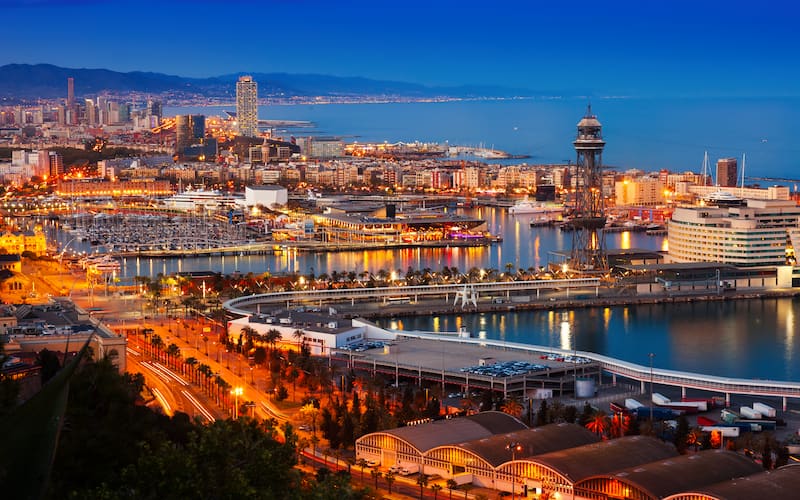
Historic Spain: The Best Medieval Towns and Castles to Visit
Each stone and street bears memory of the entire history in Spain. Tales that emerged from medieval towns and castles, knights and kings, and victories start tangibles footprints in life experiences time has no power over. From the cobbled streets of Toledo to the lofty Alhambra in Granada, places have such spellbinding history to make hearts rend and minds rave. Visitors here can walk between city walls and walk into magnificent fortresses while gazing in awe at the timeworn pieces of architecture carved in Gothic and Romanesque lines. Lovers of history, culture, or simply picturesque terrain will find in its medieval tarns ways in which to make travel experience unique.
It is so much easier now that the UAE resident could actually plan their visit to these fantastic sites. All you need to do for searching the historic treasures is apply for a Spain visa from Dubai or a Spain visa from Abu Dhabi. Indeed, the process for a Spain visa application is simple and with proper documentation, one could have smooth entry to this European land. And once a visa is in hand, well, you would only need to prepare for stepping into centuries of history and gazing upon some of the most well-preserved medieval towns and castles of Spain as they boast.
Here are some of the historic Spain: The Best Medieval Towns and Castles to Visit
1. Toledo – The City of Three Cultures
Toledo is worth visiting an hour’s trip from Madrid and is almost completely stuck in time. Toledo was also the capital of Spain and a center for the coexistence of Christianity, Islam, and Judaism. Its medieval charm manifested in the city’s narrow winding alleyways, arched gateway entrances, and Gothic cathedrals.
The crown jewel shines out to the Alcázar of Toledo, a stone fortress which has seen ages of wars and transfers of political power. Today, it is called the Army Museum; it displays military history of Spain. Wandering through Toledo feels like entering a historical novel, where every corner seems to whisper tales of knights, kings, and faith.
2. Segovia – At Home with a Fairytale Castle
Los Angeles is northwest of Madrid. Probably the most famous sight of Segovia is the Alcázar, an enchanting castle that appears to have come straight from a Disney film. Its pointed towers and cliffside setting make it truly dramatic; it actually inspired Walt Disney’s design for Cinderella’s Castle and touched off generations of artists.
Apart from that castle, Segovia boasts an aqueduct built by the Romans, hundreds of medieval walls, and of course, the Ciudad Cathedral Segoviana. Cobblestone streets, peaceful plazas, complete the fairytale backdrop. The ideal place for day trips or romantic getaways.
3. Ávila – The Walled City
At present, Ávila is a city where time stops. These massive stone walls with 88 towers and 9 gates were built in the 11th century against heinous invaders but now form part of UNESCO’s World Heritage Sites.
Inside the walls are Ávila Cathedral, one of Spain’s oldest Gothic cathedrals, plus numerous Romanesque churches. Walking along the walls is not to be missed for panoramic views of the city set against the surrounding countryside. Ávila is also known as the birthplace of St. Teresa of Ávila, whose name is commemorated throughout the town.
4. Ronda – The Cliffside Fortress
Nestled in the mountains of Andalusia, Ronda is arguably the oldest town in the country. Its position by an extremely deep gorge has made it one of the prettiest sights in all Spain. The medieval part of town, La Ciudad, has narrow streets and stone buildings rubbed with secret courtyards.
Arab Baths, Palacio de Mondragón, and the old Moorish city walls give Ronda additional medieval flavour. And of course, the Puente Nuevo, a stone bridge that crosses the gorge, allowing breathtaking views and a sence of astonishment at the engineering of times past.
5. Peñíscola-The Sea Castle:
It is a rock headland set in the Mediterranean Sea and is often called “the Gibraltar of Valencia.” The Peñíscola Castle, built by the Knights Templar in the 13th century, crowns the old town. Later on, this fortress served as the residence of Pope Benedict XIII during the Western Schism and was given the name “the city in the sea.”
The castle offers a stunning view of the sea along with the modern beach resort below. Walk in the old town through its whitewashed streets, visit the lighthouse, and taste fresh seafood in one of the coastal restaurants. Peñíscola is a relaxation at the sea along with the medieval charm it has.
6. Cardona. The Salt Fortress:
Although this town has its origin in Catalonia, its fame lies in having its Castle of Cardona, which is primarily known as a medieval stronghold that was never conquered. It is located on top of a hill facing the Saline Valley, with a church, fortress walls, and a tower built in the 11th century.
Its uniqueness is that it’s not just the Salt Mountain, which was an important commodity at that time; the castle was built so that it could protect this “white gold”, and now the mines can be visited through guided tours. The castle has been converted to a luxury Parador hotel and enjoys most of his nights spent in a medieval way.
7. Morella:
A Fortress in the Mountains Morella, in eastern Spain, is perched on the hilltop, surrounded by 2 kilometers of defensive walls, picturing most of the old medieval town found in that region. It is important for the Morella Castle, which is from the 13th century and is famous for the views over the countryside.
There are stone houses, old churches, and craft shops in the town. Visit Santa María la Mayor Church, a Gothic masterpiece with carved stone details, and taste flaons (sweet pastries) for a local sample. Morella is especially magical during festivals when the streets are filled with the sounds of traditional music and the sight of colorful costumes.
8. Consuegra-
Land of Windmills and Castles. Consuegra is well renowned in the heart of La Mancha because of its famous windmills and because it is home to the grand Castle of Consuegra. This castle which dates back to the 10th century is nothing more than a stronghold of the Knights of the Order of Saint John at that time.
The windmills are lined up in a saddle-like arrangement at the top of a ridge; they build the legendary scene in our mind from Don Quixote by Miguel de Cervantes, where the hero mistakes them for giants. Climb to the top for a panoramic view across the plains and immerse yourself in a setting that feels both literary and historic.
Conclusion
Not only are Spain’s medieval stones silent, but also the halls; their whisperings are related to the battles that they have fought and the lives they have sheltered. From fantastical castles huddling on the mountaintops to towns with knotted streets and churches of antiquity, every inch displays a past of riches Spain’s history holds. These places are far from being purely tourist attractions—they’re portals into another time when culture and tradition met beauty.
To dream of this journey into a rich past, the UAE resident needs no farther than a Spain visa from Dubai or a Spain visa from Abu Dhabi to open the door to finding things new. With travel plans in order and visa approved, slinging your bag becomes the last step, and soon you’ll be lost to a timeless adventure. Whether examining the might of Alcázar in Segovia or strolling through the aged medieval heart of Girona, memories in history and wonder will be promised here.



